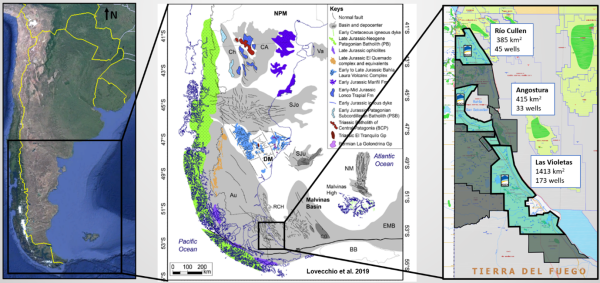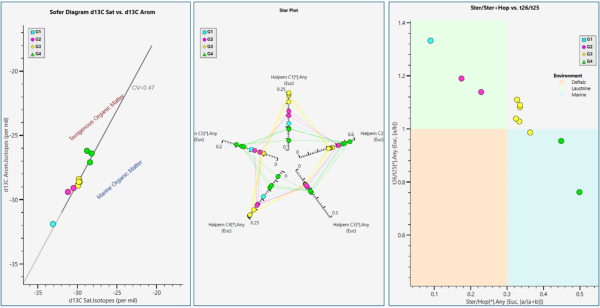Student Spotlight
At IGI we are proud to be able to support students in universities with free academic licenses of IGI’s geochemistry interpretation software. We caught up with Hernán de la Cal from La Plata, Argentina to find out how IGI’s software is helping him with his research.
Hernán, tell us a bit about yourself?
I hold a degree in Geology from the National University of La Plata, Faculty of Natural Sciences and Museum, and I am currently pursuing a PhD degree at the same institution, under the guidance of my directors Gerardo Páez (CONICET Researcher and Professor at the National University of La Plata), and Héctor Villar (General Director of GeoLab Sur S.A.). The latter was the one who introduced me to the software.
How have you used p:IGI+?
My PhD thesis aims to characterise the Paleozoic basement of the Austral/Magallanes Basin (Igneous and Metamorphic Basement Complex of Tierra del Fuego) and the overlying Jurassic volcanic unit (Serie Tobífera, comprising volcanic members forming a Silicic Large Igneous Province [SLIP]). Additionally, the project looks to determine the potential development of hydrocarbon reservoir conditions within these units. Furthermore, it seeks to ascertain if the clastic units interdigitating within the Serie Tobífera, of lacustrine origin, could be a viable source rock for part of the hydrocarbons present in the Basin. All information used consists of subsurface data from oil and gas wells (well logs, cuttings, cores, among others) and 2D/3D seismic data.
How has p:IGI+ assisted you in your work?
I am using the software to input the results of several analyses performed at GeoLab Sur S.A. Data such as %TOC, Pyrolysis, %S, API gravity, Carbon Isotopes, GC, and GCMS were acquired from cuttings, cores, and oil samples from wells affiliated with the company I work for (ROCH S.A.). Additionally, I have access to data from neighbouring areas provided by operating companies ENAP-SIPETROL, GEOPARK, TOTAL and YPF.
With all the information loaded, interpretation will be possible with the aid of p:IGI+ autograph templates. These will help assess the quality of the Jurassic source rocks, the presumed origin of the hydrocarbons and, if possible, determine a correlation between source rocks and oils. It is important to highlight that the primary source rock of the basin is the marine black shales of the Palermo Aike formation, while historically, the main hydrocarbon reservoirs are the fluvial to marine deposits of the Springhill formation, both deposited in the Cretaceous period.

Fig 1: On the left, map of southern South America showing the Patagonia from Argentina and Chile; In the center, map of Mesozoic Basins of Patagonia where the distribution of the Austral Basin is observed and the area of interest is indicated (modified from Lovecchio et al. 2019); On the right, detail of the northern sector of the Province of Tierra del Fuego where the area of interest is located, and the areas operated by the company ROCH S.A. are indicated, along with its extension and number of hydrocarbon wells.
This data was presented in 2022, at the Hydrocarbon Exploration and Development Congress, organized by the IAPG.

Fig 2:A range of isotopic and biomarker pIGI+ interpretation plots. From the analysis of these data, we have been able to reach the conclusion that the analysed oil corresponds to two end members, one marine (G4, assigned to the Palermo Aike Fm.) and another generated from sequences of lacustrine origin (G1, assigned to the Tobifera Series). In addition, there are oils which appear to be a mixture of the previous ones in different proportions (G2 and G3).
If you’re studying or working at an academic institution and you think IGI’s software would help you with your research please reach out to us, we’d be delighted to help by providing an academic licence of p:IGI+ free of charge (subject to conditions), for more information please contact us on info@igiltd.com
